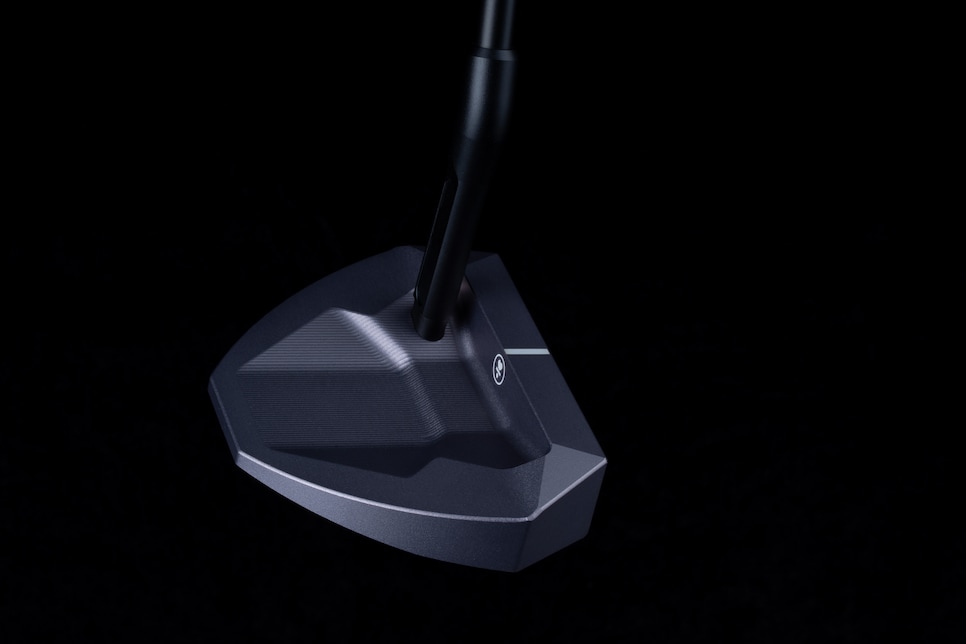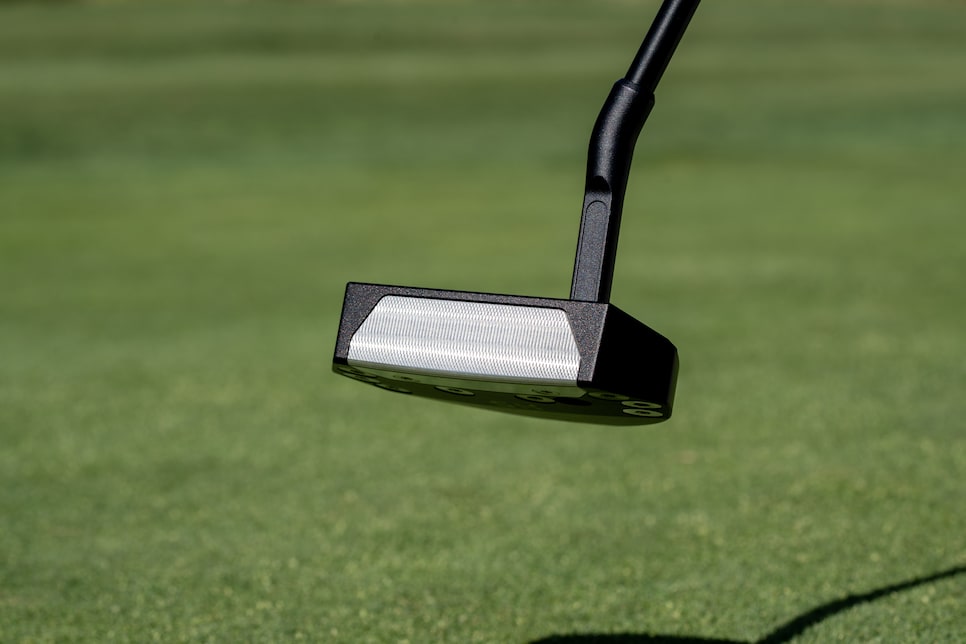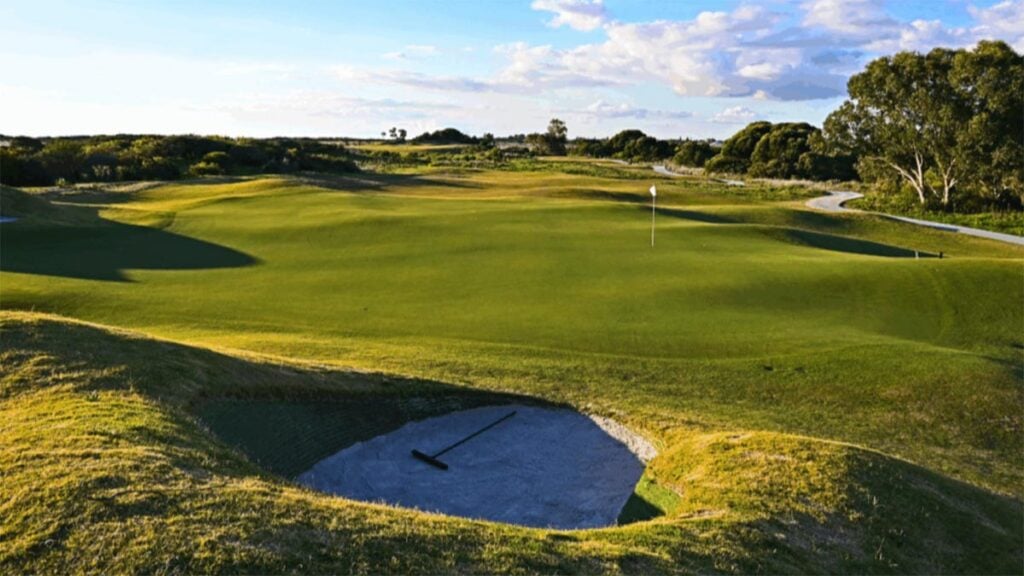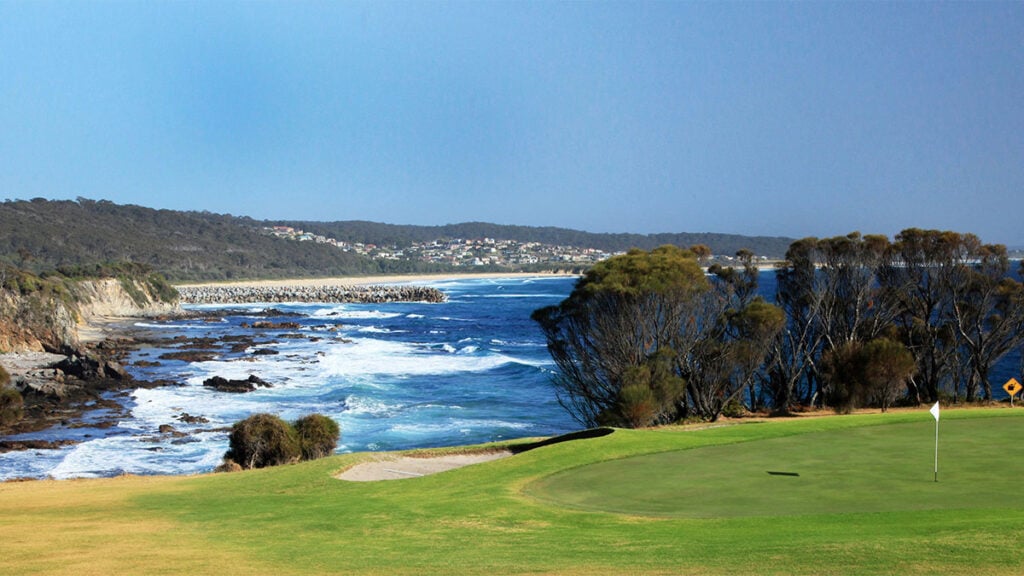WHAT YOU NEED TO KNOW: L.A.B. Golf expands its Oz.1 line of putters to include the company’s first heel-shafted mallet design, the Oz.1i HS. This head features a lightweight hosel that allows for the angle of the shaft axis to be more in line with the center of the head, fundamental to L.A.B. Golf’s philosophy of using the weighting to maintain a face angle that stays square to the lie angle during the stroke, the so-called “zero-torque” idea that L.A.B. Golf has led the way on (even if its chief evangelist and CEO Sam Hahn doesn’t especially like the term). At the same time, through the use of a lightweight aluminum hosel, the head weight is more evenly balanced between the toe and heel side, despite the heel-sided shaft. A fly-milled stainless steel face insert helps to create a firmer feel with increased ball speeds.
PRICE: $500, with custom versions starting at $600.
3 Cool Things 
1. Heel thyself. Not as simple as other heel-shafted mallets, L.A.B. Golf’s putter design philosophy of balancing the head’s weighting to its lie angle requires the shaft axis and the weighting to be more in line with the center of the head. To make sure not too much weight tips that balance point toward the heel side of the head, the hosel here is made of lightweight aluminum. That makes for an 18-gram hosel, as opposed to 40 grams, if it were made of steel, said Hahn, L.A.B. Golf’s co-CEO.
As well, another key to the L.A.B. Golf approach is to ensure that the angle of the shaft axis aligns more with the center of the clubhead. To accommodate different lie angles on a heel-shafted design, the Oz.1i HS uses a hosel, what the company is calling a “riser,” that gets progressively taller as the lie angle gets more upright. In all, there are 10 different hosel configurations from 65 to 74 degrees, which according to Hahn accommodates some 98 percent of the custom fits the company has logged in its system.
“We want people to be able to stand how they want to stand and swing the putter how they want to swing the putter, and you have to have a variety of angles in order to do this but we always are going to lie angle balance that head,” Hahn said. “On a heel-shafted putter with an offset hosel that shaft axis can be pointing down towards the toe or the heel, and we just simply can’t balance it. So to solve for this, we’ve got to lean into the fact that we needed to be functional, not necessarily pretty or tradtional. The fix was to make different length risers. We prioritize function in a way that ultimately came out with a very cool product and a very cool system with which to get these things balanced and have them performing the way our center-shafted models do.”
In any case, he estimates the heel-shafted Oz.1i HS opens up L.A.B. putters to well over half of the market that’s naturally resistant to any putter that’s center-shafted. Long ago, he admits, he was one of them. “There are still people who simply cannot look at a putter with a shaft going right in the middle of the head, and I accept this, even though I was one of those people who also had a really hard time looking at a center-shafted putter,” he said. “We’ve been able to lean in to the idea of using a branding iron putter because of our technology, and I think people have come with us to the point where we don’t hear that much about people not wanting to try our putters because they’re ugly. What we do hear is ‘I can’t hit a center-shafted putter.’ This putter is our answer.”

2. Facial recognition. When the company first introduced the Oz.1 lineup last fall, it included a version with the company’s first-ever face insert, a fly-milled stainless steel piece mechanically bonded to the aluminum body, the Oz.1i. This heel-shafted, almost conventional looking mallet (by L.A.B. Golf standards, anyway) will again employ the steel face insert, based on consumer input and the desire to achieve greater initial ball speeds than an aluminum face does.

“Our team has done some testing, and one thing that I found pretty wild is the actual ball speed differences are not as big as you think,” Hahn said. “If you might guess, you would say something like 20 percent faster for the steel face, but really, it’s only about 4-6 percent. Still, in practice, that’s actually a lot. Of course, there’s also a lot of psychosomatic stuff that goes on, some brainy stuff that happens with sound and feel that has the body reacting differently.”
Hahn believes that feel aligns with the audience that prefers a more traditional heel-shafted look at address, but it also allows L.A.B. to look at creating multiple face insert options, as well as colors, something that it’s done for some time with its wide array of body colors.
3. New boss, same as the old boss. The Oz.1i HS is the first introduction since the announcement in July that a majority stake in L.A.B. Golf had been acquired by L Catterton, the private equity arm backed by French conglomerate LVMH, for a reported $200 million. Hahn, who will remain co-CEO with industry veteran Robert Johnson, extolled the virtues of the new influx of capital.
“It makes us better because any number of steps towards growth are just simply accelerated,” Hahn said. “So as we grow, we’re going to have access to talent that’s going to make that growth just that much easier, smoother, wiser. … But as far as how it changes our business, other than more people, more ideas flowing through, our company ethos and our mission and our attitude, nothing has changed, nothing will change, and that’s why we partnered with El Caderton. They were the only suitors who were coming from a place where they said you’d be crazy to try and change any of this, it’s a really special business.”
After more than a year working on the minutia of the transaction, Hahn said he’s reinvigorated at the possibilities for a company that’s seen 10X growth in both sales and staffing in the last three years and is on the verge of becoming the second largest putter company in golf with the potential to set an all-time record for putter company revenue.
“The emotional burden of the transaction just sort of drained me,” he said. “Now that it’s over, I am absolutely a proper golf junkie again. I’m just absolutely jazzed about all of the opportunity for innovation and creation and growth, and so excited and proud of all the people in the building that now have such incredible opportunities for their careers to grow.”
This article was originally published on golfdigest.com




